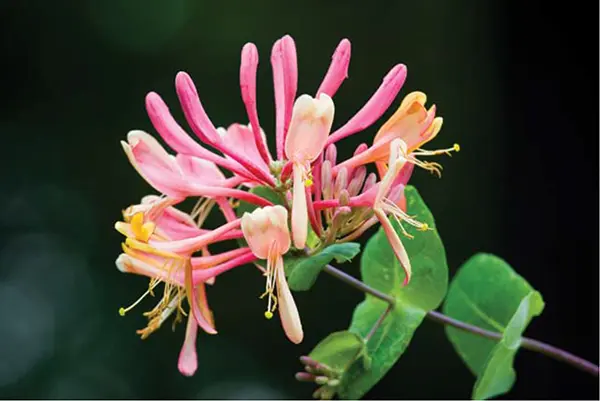
From Adam Lonicer’s Legacy to Modern Gardens
Honeysuckle, a plant belonging to the Lonicera genus, is cherished for its fragrant, tubular flowers and small berries. Named after the German botanist Adam Lonicer, Honeysuckle has a rich botanical history and has been a part of traditional remedies for centuries.
A Tapestry of Varieties: The Diverse World
The world of Honeysuckle is diverse, with varieties like the Japanese honeysuckle, celebrated for its ornamental beauty and soil stabilizing properties, and the orange honeysuckle, known for attracting hummingbirds. Another variety, the coral honeysuckle, has been used by Native Americans in traditional smoking practices to alleviate asthma symptoms.
Therapeutic Benefits: Fostering a Connection with the Present
In herbal practices, Honeysuckle flower essence is renowned for its ability to help individuals who are overly fixated on the past. This essence is particularly beneficial for those who dwell on bygone happy times, lost friends, or unfulfilled ambitions, assisting them in learning from the past rather than living in it. Honeysuckle essence is also valuable for easing feelings of homesickness and nostalgia, guiding users towards a more present-focused and hopeful outlook.
Through its enchanting fragrance and multifaceted varieties, Honeysuckle not only beautifies gardens but also offers a unique way to enhance emotional well-being. Its role in herbal remedies highlights the plant’s significance in helping individuals embrace the present and look forward to new joys and experiences.
